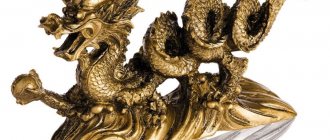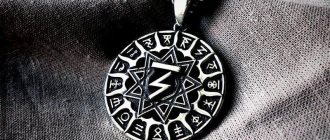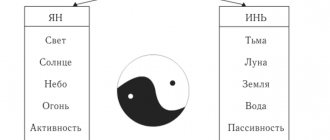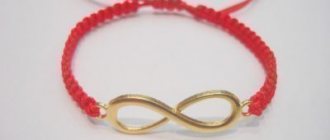The snake is one of the most common animal symbols on the planet. It receives great attention in almost all ancient cultures. Moreover, this is a very ambiguous symbol: it can be both positive and negative.
Perhaps, people have not paid so much attention to any representative of the animal world. References to this ambiguous image can be seen in almost all types of art, many religions, occult sciences and sacred practices.
Let's look at what a ring in the shape of a snake means and why this decoration has not lost its relevance over the centuries.
History of jewelry
A ring with a golden snake has always been an extremely controversial piece of jewelry. However, the owners of such jewelry were never ordinary people: they usually belonged to rulers, generals, magicians, alchemists, and medicuses. And so it has been since time immemorial.
For example, among the ancient ancestors of modern Europeans, the Druids, snakes were revered so highly that the priests were called “snakes” - wise, omniscient, creative.
In Ancient Egypt, these reptiles marked a significant part of the pantheon. Let's start with the fact that the supreme deity Osiris was identified precisely with snakes, Aten and Amon were snakes completely, Isis - only half.
If you look at the images of the pharaohs, you can pay attention to the strange headdresses of the Egyptian rulers, crowned with snakes - uraei. The motifs of this reptile were also used in the jewelry of the pharaohs, including rings.
In light of the worship of snakes in Egypt, Cleopatra's love for snakes is understandable. And the version of the suicide of the last female pharaoh with the help of a king cobra bite looks very plausible. The great ruler, commander, poetess and pharmacist could not choose an ordinary death!
In Ancient Hellas, Zeus loved to transform into a snake, and in this image he irresistibly charmed earthly beauties. Legend has it that the serpent Zeus became the father of Alexander the Great.
Let's move to India. In the homeland of the royal king cobras and other representatives of this poisonous family, they were simply idolized. There, almost every deity was depicted surrounded by snakes, but especially often such a hissing retinue was present in the four-armed Shiva and the formidable Kali.
In the East, the cult of snakes was especially strongly developed, and often no distinction was made between snakes and dragons. So the title of the Japanese emperors, mi-kado, can be interpreted as both “son of the dragon” and “son of the snake.”
View the entire ring with a snake in the SUNLIGHT catalog (on the left is the Quetzalcoatl snake)
Snakes were revered and deified by African tribes, as well as the civilizations of pre-Columbian America. For example, Quetzalcoatl (“feathered serpent”) played a vital role in the Aztec civilization, and the name of the mother of all people, Cihua-Cohuatl, literally translated as “woman with a snake.”
Almost all ancient cultures had the image of the “world serpent”. The Hindus had the world snake Ananta or Shesha, the Egyptians had the already mentioned uraeus, as well as the ouroboros, devouring its own tail. Even outside of the snake theme, rings are usually associated with ouroboros, that is, a symbol of the eternity of existence.
It cannot be said that the snake is an unambiguously positive symbol. Even in those cultures that we have already mentioned, snakes were treated with respectful caution, and the heroes of the epics celebrated victories over all sorts of monstrous reptiles. The victories of the epic heroes over the Serpent Gorynych are clearly from the same opera.
And in most medieval Western cultures, snakes more often symbolized evil, hatred, meanness - in general, all the negative traits inherent in humans. Killing this reptile, even if it was non-poisonous, was considered valor.
This attitude towards snakes is clearly dictated by biblical sources. As you know, it was the tempting serpent who deprived Adam and Eve of eternal life, provoking them to commit a forbidden act. For Jews and Christians, the snake is clearly an enemy, hateful and merciless. He personifies not only human vices, but also Satan himself.
Modern Orthodox priests are very tolerant of the design of rings for church rites, but this loyalty does not extend to snake themes. So, if you are choosing rings for a church wedding, try to avoid such provocative hints.
Early Christianity showed clear traces of pagan beliefs. And Christ was often called the “Serpent of Good,” as opposed, obviously, to the “Snake of Evil.”
How to wear it correctly
Most often, people use a snake pendant as a strong protective amulet. You can also always carry it with you in your pocket or purse. There are certain features of using such a talisman:
- Since the coil has a two-digit value, it is recommended to wear it not all the time, but for a short time. While wearing it, you need to monitor your internal sensations.
- If you feel any discomfort, this talisman is not suitable for you. Otherwise, you can increase the period of wearing it.
- It is recommended to use a single-sided image. Such an amulet cannot be used together with Christian saints.
- It is impossible for strangers to see the amulet; it must be hidden under clothes.
- If the talisman has deteriorated or cracked, this is a sign that it has accumulated a large amount of negative energy. In this case, you need to bury him in a deserted place, after thanking him for your help. If you have lost your talisman, this means that it took upon itself a powerful energy blow that was directed at you. In this case, you need to take care of creating a new amulet.
The meaning of a snake ring
As mentioned above, the symbol of the snake is very ambiguous. In this regard, the meaning of the snake ring can be interpreted in different ways:
- Eternity and infinity. We have already mentioned world snakes in various forms. They symbolize the eternity of all things, the basis of the universe, as well as divine self-sufficiency.
- Revival. This reptile is capable of shedding its skin and being reborn, falling into sleepy lethargy and, as it were, rising from oblivion. It used to be believed that snakes hold the secret of immortality.
- Unity and struggle of opposites. Feminine and masculine, rebirth and death, moon and sun, light and darkness, yin and yang - all this merged into a single animalistic symbol.
- Rod and family. Snakes are revered as ancestral gods in many Native American, African and Eastern cultures. And in China it is believed that snakes living in the house are the spirits of ancestors who can bring good luck.
- Wisdom and knowledge. A gold ring in the shape of a snake can symbolize wisdom, intuition and a thirst for knowledge. By the way, the same Christ told his disciples: “Be wise as serpents...”
- Fertility. Fertility is always associated with the earth, and among our ancestors it was identified with various deities (mostly female). Many of them were accompanied by snakes.
- Healing. If you see on your interlocutor a ring with a silver serpent entwined around a bowl or caduceus (staff), you will probably immediately determine that this is a doctor.
Two snakes entwined around a staff are a common symbol of homeopathic medicine. We all know that poison in microscopic doses can heal, and this is in tune with the fundamental principle of homeopathy: treat like with like.
Gold ring with diamonds (go to the SUNLIGHT catalogue)
How to place a snake according to Feng Shui?
The main location of the snake is the northeast. A well-placed snake symbol in this part of the house will not only help in learning, but will also nurture the ability to cooperate and understand each other. Stone and crystal snakes are best suited for this situation.
In the northwest, the snake acquires such qualities as authority and severity. It will contribute to the development of intuition and confidence, help to successfully cope with the responsibilities of a leader and make far-sighted decisions. For this place, choose a snake made of stone or metal.
The snake, located in the east, will quickly lead you to change, help you catch ideas by the tail and make the desired changes in life. For a more harmonious effect, use bamboo or wooden snakes for these purposes.
What types of snake-themed rings are there?
The snake theme, so ancient, multi-valued and diverse, could not remain without the attention of jewelers. What kind of decorations do they invent for such a fertile theme! The undisputed leaders in this category are bracelets and rings, that is, jewelry that is most suitable in shape.
The imagination of designers is inexhaustible. Snake-themed rings come in a wide variety, both jewelry and costume jewelry. Among them are the following types of designs:
- Classic closed rings in the shape of a snake. The snake wraps one or more turns around the finger and closes, forming a solid structure. Such rings often play on the theme of Ouroboros clutching his own tail. However, this is not all: a snake can form intricate rings, wrap around a precious stone, and so on.
- Spring rings. Perhaps the most common and interesting variation on the theme under consideration: a ring-spring in the form of coils of a flexible snake body. In addition to the winning design, spring rings have one undeniable advantage: thanks to their open design, they fit well on fingers of a relatively wide size range.
- Phalangeal rings. Nowadays, fashionable phalanx rings are very friendly to serpentine shapes: the springy design allows you to “fit” the jewelry onto the phalanx as tightly as possible. This minimizes the risk of losing the jewelry and expands the scope of its use: a snake ring that has become small can be moved to the phalanx.
- Mono-rings. This decoration is quite provocative: the snake wraps itself around not one finger, but several. Single rings of this type are very demanding on the bow and are suitable, first of all, for young rebels who want to emphasize their own independence and originality.
- Slaves. The classic version is a chain bracelet connected to a ring in the shape of a snake. But there are also more aggressive options: the snake wraps itself around the hand, and its head is fixed with a ring on the finger. This is a very pretentious decoration, definitely not for every day.
- Rings with snake motifs. There is a wide range of jewelry where the theme we are considering is played out not directly, but indirectly. Most often, this is a snake scale motif, widely used by jewelers even in wedding rings.
Almost all top jewelry houses have jewelry collections that in one way or another echo the symbolism of the snake. For example, the Bvlgari brand, which presented the Serpenti collection back in the 40s of the last century, regularly adds new masterpieces to it.
Meaning of different symbols
There are different forms of symbols, such as a snake swallowing its tail. The fact is that the serpent symbolizes the eternal cycle. It has its ancient name - Ouroboros, a snake curled into a ring and biting its own tail. Its purpose is to show a person that existence has certain cycles of its development and that everything repeats itself endlessly.
There is no end as such! Creation turns to destruction, life gives way to death. But death on the physical plane is birth on the subtle plane (just as birth on the physical plane is probably similar to death on the subtle ones...). Of course, I can’t say with certainty...
But Kundalini is the most powerful vital energy that rises along the spine and is depicted in the form of two intertwined snakes. These two snakes symbolize energy channels that intersect. And where they intersect, there are chakras (7 main ones and a huge number of smaller ones).
This energy is in each of us, but only in a dormant form. But in order to awaken an avalanche of flow, you need to work on your spiritual beginning and physical shell, practicing sacred yoga, cleansing the body of toxins and methods for clearing your consciousness of unnecessary, I would say, false beliefs.
The snake is a multifunctional symbol (like all symbols in general!)! He manages to combine masculine, feminine, and androgenic principles. It is also one of the male totemic signs expressing strength. He is often ranked among the phallic symbols, called “the husband of all the fair sex.”
If we consider a cold-blooded creature as a killing machine, then we can attribute it to the messenger of death and extermination, but if we think of it as a creature that changes skin, then we can find subtext in the form of transformation of the living, resurrection and life.
When a person uses symbolism correctly, understanding its original duality, he can count on acquiring certain benefits and the strongest protection. A snake can become for you both a symbol of universal goodness and a sign of global evil. The choice is yours, but I still advise you to choose the positive!
The symbol of a snake nailed to a cross appeared in medieval Christian art. This frightening image is not as violent as it seems. The sign contains a certain message, containing a key meaning - the resurrection and the superiority of the spirit over primitive flesh.
What to wear with: tips from stylists
A women's ring in the form of a snake made of silver or gold is a fairly universal decoration: it can even be worn with an office look, especially if we are not talking about too massive jewelry without pronounced aggressive motifs. This will give the business image a slight piquancy, irresistible femininity and mystery.
More massive and bright rings are an ideal solution for almost any city look: walks, romantic dates, parties with friends and even social events. True, voluminous monorings and snake-shaped slaves should be worn more carefully and never combined with other rings.
But for men, it is better to choose rings made of white gold, silver, steel or titanium, and only with a slight touch of a snake theme, for example, the texture of the scales. True, if you are a creative and bright person who despises stereotypes and is not bound by an office dress code, you don’t have to deny yourself anything!
09.11.21
Caduceus
The Caduceus is a symbol of total mediation and agreement in harmony. It can be found in the form of an image, an emblem of trade. But if you look into the past, the caduceus was an integral attribute of the messenger, who disposed of it to ensure complete safety for the owner.
If we consider the symbol from the point of immersion in the atmosphere of the sphere of ancient traditions, then the caduceus was transformed into the rod of Hermes, the messenger of the gods themselves! He could give people prophetic dreams and act as a symbol uniting the world.
At first it looked like an olive branch, with two shoots on top, which was richly decorated with garlands. But later the sign was presented in the form of 2 intertwined snakes that wrap their bodies around the rod on both sides. Over time, it was decorated with wings to give Hermes speed of movement from the island. The Caduceus of Hermes also symbolizes Kunadalini energy and spiritual awakening.
It is worth noting that the caduceus has more than one interpretation. There is the staff of Aesculapius, the Greek God of healing, which is also surmounted by a representative of the cold-blooded, entwined with a chalice. He gained universal fame because to this day he is a symbol of the doctor and medicine.











